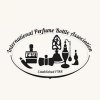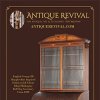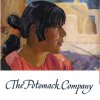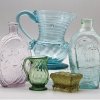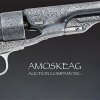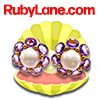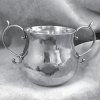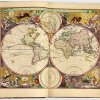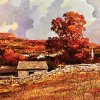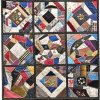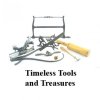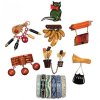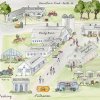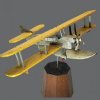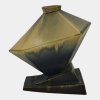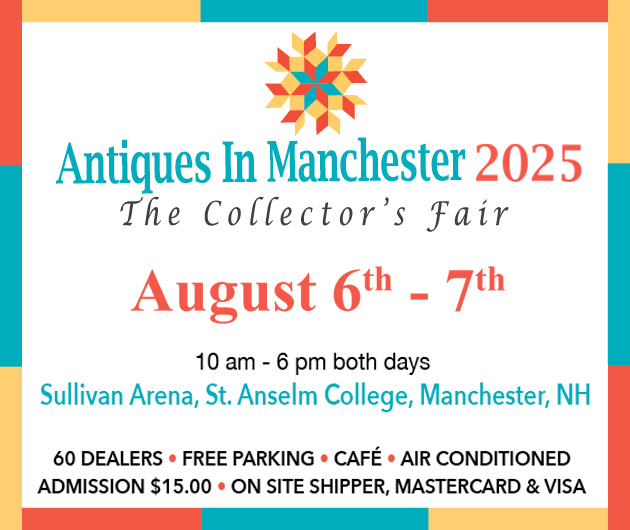The Philadelphia Antiques Show
June 11th, 2008
Philadelphia, Pennsylvaniaby Lita Solis-Cohen
It pays to worry. The Philadelphia Antiques Show committee was apprehensive about the move from their long-established venue at the 33rd Street Armory to the Navy Yard. They were criticized for their aggressive tactics in securing the Navy Yard, which had been developed as a show venue by other show promoters. Four major dealers pulled out of the show in protest to what they called the unworkable floor plan. The committee was even more worried that the tanking economy would put a real damper on sales and attendance.
Their worry paid off.
"They have a big fat hit," said Connecticut dealer Arthur Liverant. "The magic was back ten minutes after the doors opened," said Philadelphia dealer Amy Finkel on Tuesday afternoon shortly before the show closed. "This space is light and air conditioned, and there has been a good crowd every day."
Business was done-dealer-to-dealer before and during the show, with steady retail business all four days (April 12-15). Some buyers were local, others flew in from afar, and many drove a couple of hours to get there. There was not the usual frenzy of buying at the preview. Lower-priced smalls sold more quickly than big-ticket items, but by Saturday afternoon some serious decisions had been made, and red dots were put on folk art, paintings, and American brown furniture.
"You had to price it right and be ready to deal," said New York City dealer Leigh Keno. "I usually sell half my stand at preview, but I had to wait until Saturday, just before the dinner for Joe Kindig, to sell two pieces of furniture, a desk and a chest." Before the show was over, Keno had also sold an easy chair that was in the Jeffords sale at Sotheby's in 2004 as well as three paintings and a piece of needlework.
Christopher T. Rebollo of Pennsylvania did not have to wait until Saturday to sell furniture and paintings. He sold early at the preview, and by Tuesday he said he had his best show ever. At the preview he sold a pair of portraits by Matthew Pratt to the Metropolitan Museum of Art and a Bucks County curly maple desk and bookcase that was a show-stopper. He said its bird finial was a replacement, based on another bird finial on a clock case from the same shop. He also sold a Philadelphia Quaker-plain dish-top tea table of classic proportions with a suppressed ball on its shaft and a well-turned birdcage that allows it to tilt and turn.
Before the end of the show, Rebollo had sold a Philadelphia four-drawer figured mahogany diminutive chest of drawers, a set of four ladder-back chairs with turned front stretchers, andirons, fireplace tools, a miniature blanket chest, some other paintings, and plenty of high-end smalls, such as a stoneware mug and a Sheffield silver wax jack. He must have knocked himself out to gather so many fresh things for his stand.
Some dealers with fine formal American furniture did little business. Peter Eaton of Massachusetts was an exception. He sold five pieces of furniture: a Connecticut scallop-base chest, a Providence inlaid card table, a candlestand, a miniature chest of drawers, and a chest-on-chest. His wife and partner, Joan Brownstein, sharing the stand, sold two paintings, a Thomas Chambers shipwreck, full-length portrait of a child, and a number of miniature portraits. "Being stuck in the back with a narrow entrance didn't kill us," said Brownstein, pleased to be doing business.
Philip W. Bradley said he sold some furniture but not his most expensive. "I sold a tall-case clock, a desk-on-frame, a gate-leg table, and a Philadelphia side chair that belonged to General Wayne. The buyer of the Wayne chair went down the aisle and bought its mate from Skip Chalfant and made a pair." At what other show can a collector do that?
Chalfant said he sold a William and Mary chest-on-chest made in New York, one of three known. He also sold a weathervane, and a spice box with vine and berry inlay is on hold. "I have never been to a show where there were two vine-and-berry spice boxes at the same time," said Chalfant. David Good and Samuel Forsythe had another and sold it.
Good and Forsythe, Ohio dealers exhibiting for the first time at this show, had a very busy show. They sold a chandelier, a pastel by Micah Williams, some blown glass, a rare stoneware mug, some redware, a Queen Anne table, and a plow weathervane.
Kelly Kinzle of Kelly Kinzle Antiques, New Oxford, Pennsylvania, also new to the show, had an odd-shaped booth at the far end of the show, but people found their way there. He sold an important western Pennsylvania landscape of Beaver Valley by Emil Bott, painted in 1883, and a pair of monumental cigar-store Indians, a chief and his princess, by the German-born Baltimore carver John Philip Yaeger that were real masterpieces.
There were five cigar-store Indians at the show, and three sold. Jeffrey Tillou sold a smaller chief, and Hill Gallery's Indian carved by Julius Melchers was under consideration. Allan Katz had an Indian princess attributed to Samuel Robb.
Folk art sold well. Katz sold a Civil War drum painted by William Bridget of Belfast, Maine, and a cobalt blue-decorated stoneware crock made for the Horatio Seymour-Frank Blair presidential campaign in 1868 when Grant was elected president. A New England carved wooden eagle plaque with a shield and draped flag found a buyer. Before the show was over, Katz also sold a folky white stone relief carving of Adam and Eve that came from a garden on the outskirts of Philadelphia, a cigar-shaped barber pole, and a circular ceiling ornament from an Odd Fellows Hall.
Tim Hill of Hill Gallery sold folk art pre-show and at the show. Gone from his stand were a carousel horse and a small carved and painted toy horse. A folk art mirror carved with the stages of life was on hold.
Patrick Bell and Edwin Hild of Olde Hope Antiques, Solebury, Pennsylvania, said they sold every day. At the preview a collector sprang for their Mahantongo chest of drawers. Three Wilhelm Schimmel carvings- a spread-wing eagle, a parrot, and a rooster-found new homes, and a slide-lid box painted red and decorated by the Compass Artist was snapped up too. They also sold a decorated stand and several more boxes and had interest in a painted cupboard.
"For the first time in years, designers requested photographs," said Bell. "On Monday and Tuesday the crowds were larger than ever, and we made sales to new people."
Schoolgirl needlework is in demand. Amy Finkel and Stephen and Carol Huber said they sold major pieces and smaller works.
The Philadelphia Print Shop had a busy stand. "We sell about half to Philadelphians and half to people who come from out of town, and this year was no different," said Donald Cresswell. "We sold an Audubon, some Philadelphia views, Currier and Ives, and maps. So far, this economy hasn't hurt us."
Arthur Guy Kaplan, an antique jewelry dealer from Baltimore, Maryland, said Philadelphia is always his best show, and this year was no different. China trade porcelain dealer John Suval of Philip Suval, Inc., said in the 36 years he has been exhibiting at the Philadelphia show, this was his best ever. Elinor Gordon, dean of China trade porcelain dealers, who has done the show all 47 years, said she had a fantastic show. Martyn Gregory, London dealer in China trade paintings, sold his major work. New York dealers Andrew Chait of Ralph M. Chait Galleries and Edith Frankel of E&J Frankel, who deal in Chinese works of art, said they sold to their regular customers.
Some dealers said they sold more this year than last, but others said selling was difficult. "It took longer to sell this year," said Alan Granby of Hyland Granby Antiques, Hyannis Port, Massachusetts. "People took time to make up their minds." Granby, whose stand was right up front, said 98% of the people attending told him they preferred the new location. They liked the valet parking for $10 or self-parking for $7, a lot less money than parking in town.
Sure, there were problems with the design of the show and the mechanics, as predicted. It was very crowded at the preview. There were bottlenecks in the long, narrow aisles and not enough cross aisles. There is no question the floor plan needs rethinking. A good architect or space planner could make this show spectacular. Perhaps an entrance at the center instead of at the north end could be reconsidered.
Many commented on the buckling wallpaper that had seams at the top because 8' paper was ordered for 10' booths. Those who spent extra for felt or did their own walls—John Alexander's walls were plywood—and put in their own ceilings made the other stands look unfinished. The air conditioning was welcome, but it was so cold at the south end of the pier dealers were wearing their winter coats.
The large dining tent with canvas sails over the food stations was dramatic, the brown and ocean blue color scheme stunning, and the mariner's compass designs on the tables in the café and in the aisles a clever way to call attention to the loan exhibit from the Independence Seaport Museum in Philadelphia. But the noise of aircraft approaching the Philadelphia airport made it difficult to hear lectures in that space or the speakers at the Antiques Dealers' Association of America (ADA) dinner honoring Joe Kindig.
The food was just adequate, not as delicious as lunches at the corporate headquarters of Urban Outfitters next door. Dealers found this dining facility during setup and patronized it throughout the show, enjoying the well-designed lobby with its gardens, fish ponds, meditation space, food stations, dining room, and terrace overlooking the water. A large glass-enclosed room in the Urban Outfitters lobby, used for focus groups, might be a good place for show lectures next year; it may be more soundproof than the tent.
Although some major folk art collectors were notably absent this year, new buyers were there, curious to see the new venue. Now that they found their way, they will tell others that the Navy Yard is only five miles from Center City. It is a $25 taxi ride from the Four Seasons Hotel, but a free shuttle bus from 30th Street Station plied its way all week, beginning on preview day at 3 p.m. Those who took the bus to the 6 p.m. preview said it took an hour. During the week, when there were no sports events at the stadiums, the trip was a half hour or less.
Superhighways make the Navy Yard accessible from the east and west, and Broad Street is a straight shot south from City Hall. Those smart enough to stay at the Society Hill Sheraton or Hyatt said it was a five- to seven-minute drive, just two exits on I-95. Perhaps a shuttle bus could run from Society Hill next year, when there may be an even larger crowd, and dealers will find it easier to stay in the Society Hill neighborhood near Independence Hall than in West Philadelphia.
Now that the committee and the dealers have experienced this year's show, they can rethink plans for future shows. Dealers need shows and so do collectors. It is where people learn and exchange information. Philadelphians have supported the show, which has become an important event on the social calendar and raised millions of dollars for the University of Pennsylvania Health System.
Antiquers will have to get used to going to the Navy Yard because the Philadelphia show is there to stay. On the last day of the show, an article in the Philadelphia Inquirer reported that Drexel University would indeed take over the management of the 33rd Street Armory and go forward with plans to renovate the drill hall for use as a basketball arena and convocation center by 2012. The recruiting station, headquarters, and museum will remain in the armory along with the university's Reserve Officers Training Corps Program.
The plan for next year's loan exhibit is already on the drawing board. Robert and Cathy Booth, known for their arresting designs for previous loan exhibits of Shaker furniture and firefighting antiques (Folk Art on Fire), will do an exhibit of Philadelphia miniatures, co-curated with miniature specialist Elle Shushan, known for her stands at the New York Winter Antiques Show designed by Ralph Harvard. It should take up very little space.
For more information call (215) 387-3500; Web site (www.PhilaAntiques.com).
